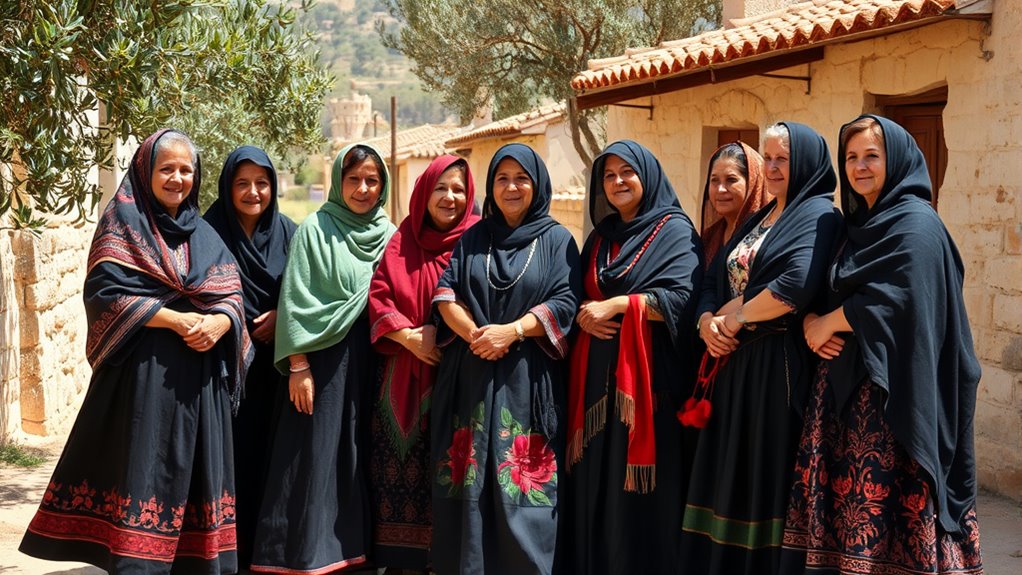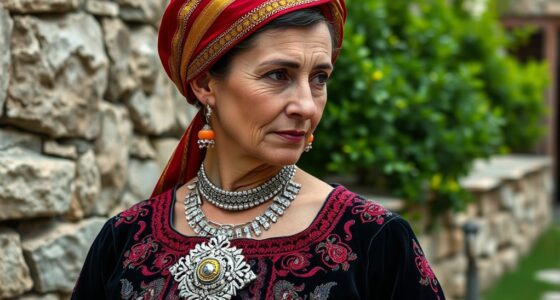Women in Sardinian society have historically held essential cultural, social, and leadership roles, from prehistoric times to today. They actively contribute to family, community, and regional traditions, often caring for the elderly and maintaining local customs. Despite economic challenges and gender disparities, women remain resilient and influential. Their roles are evolving with policies promoting equality and recognition. To understand how women shape Sardinian life and future, there’s much more to explore ahead.
Key Takeaways
- Historically, women in Sardinia held spiritual, community, and leadership roles, symbolizing fertility and societal continuity.
- Women play a central role in family caregiving, household stability, and maintaining cultural traditions amid demographic aging.
- Despite participation in the workforce, women face socioeconomic barriers, including a gender income gap and limited full-time employment.
- Women constitute a significant portion of centenarians, benefiting from traditional diets and active lifestyles that promote longevity.
- Regional policies and cultural initiatives aim to enhance gender equality, promote women’s achievements, and address gender-based violence.
Historical and Cultural Foundations of Women’s Roles

The historical and cultural foundations of women’s roles in Sardinian society reveal a long-standing appreciation for their essential contributions. In prehistoric Nuragic times, women played crucial roles in spiritual and community life, symbolizing fertility and continuity. Archaeological finds show they were active beyond domestic chores, participating in rituals and holding responsibility within society. Even as Phoenician and Punic settlements emerged, women maintained their cultural identity, coexisting with colonizers and influencing local governance through roles likely connected to community welfare. Despite Roman conquest and medieval shifts, women persisted as key figures in family, religion, and leadership, exemplified by figures like Eleanor of Arborea. Folk traditions, such as the *accabadora*, further highlight women’s complex societal roles, blending compassion, authority, and cultural resilience. These roles often reflected a recognition of women’s vital importance in sustaining community cohesion and cultural continuity. Moreover, the enduring respect for women’s leadership and spiritual influence underscores their pivotal position in shaping Sardinian societal values across generations.
Socioeconomic Factors Shaping Women’s Lives
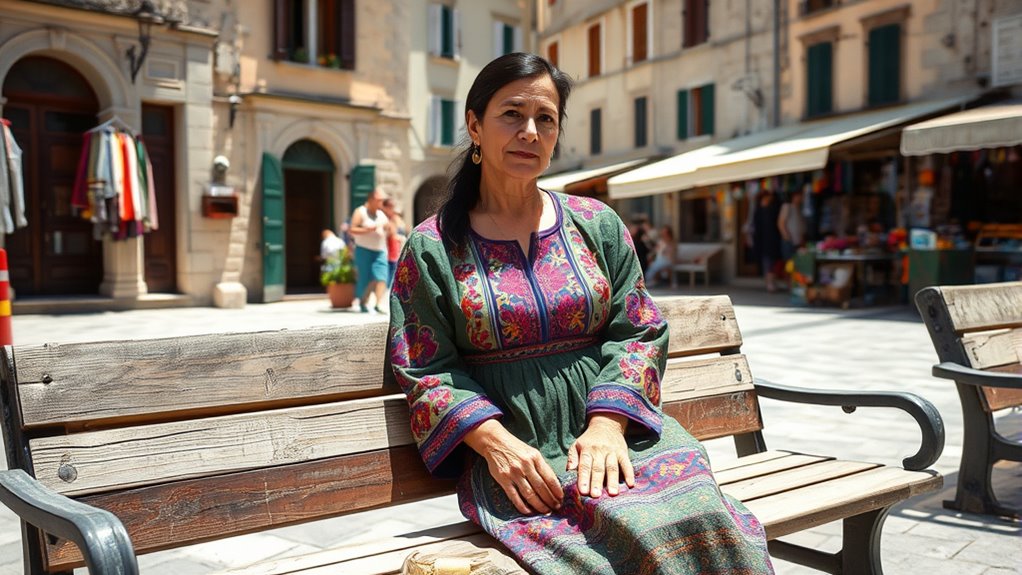
Socioeconomic factors deeply influence women’s lives in Sardinia, shaping their participation in the labor market and their economic opportunities. With an employment rate of just 46.5%, women face barriers to entering and staying in stable jobs, often due to cultural and structural gender imbalances. Many women shoulder disproportionate domestic and caregiving duties, which limits their work hours and career advancement. The gender income gap is significant, with women earning less and participating less in full-time employment—only about 30% compared to over 57% for men. A large share of women work part-time, mainly to balance unpaid care with job demands. These socioeconomic barriers, combined with societal expectations, restrict women’s economic mobility, reinforcing gender inequality in Sardinian society. Regional policies aim to address these disparities through support programs and recognition initiatives. Italy ranks 14th in Europe for gender equality, below the European average, highlighting ongoing challenges in achieving full gender parity. Additionally, employment opportunities for women are often limited by regional economic structures and cultural norms that favor traditional roles.
Demographic Patterns and Family Structures
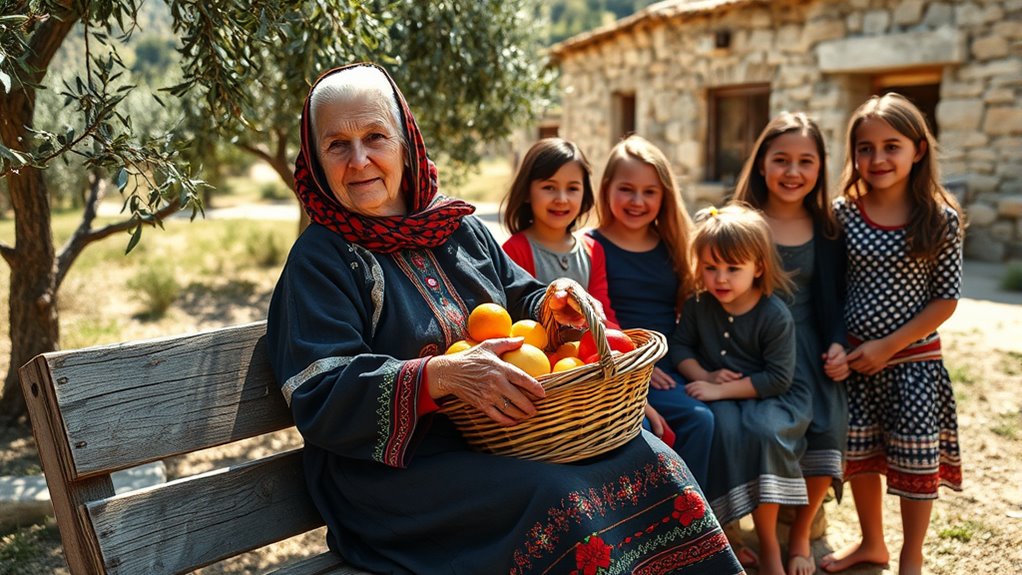
Demographic patterns in Sardinia reveal a society that is gradually aging, with women playing a central role in family structures. The population slightly favors females, with about 50.8% women in 2025, and a growing number of elderly residents—over 428,000 aged 65 and above—highlighting demographic aging. The working-age group remains dominant, but the decreasing youth population suggests smaller families and fewer children. Many households are multi-generational, reflecting traditions and caregiving roles often assumed by women. Marriage remains significant, especially among higher-income families, while single and widowed households also shape family dynamics. Population decline and aging influence household sizes and intergenerational living, reinforcing women’s essential roles in caregiving, household stability, and maintaining family continuity amid shifting demographic trends. Additionally, the population estimate for 2025 indicates ongoing demographic changes that will likely continue to impact societal structures. The demographic aging trend emphasizes the importance of women’s roles in sustaining community resilience and social cohesion.
Health, Longevity, and Gender-Specific Outcomes
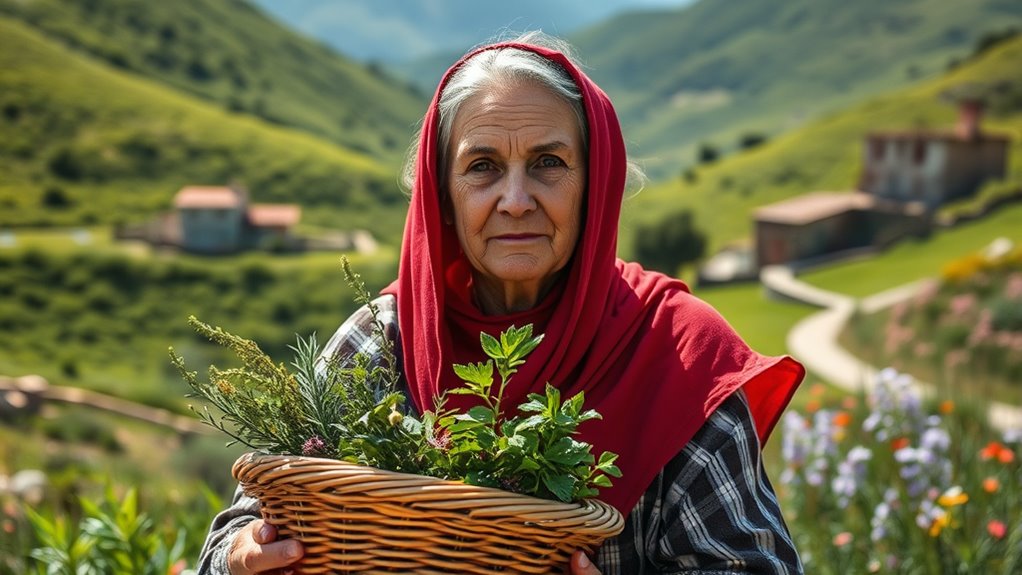
Sardinia’s remarkable longevity patterns, especially among men, challenge global expectations where women typically outlive men. In Sardinia’s mountainous regions, men often live into their 90s and beyond, with survival rates from age 50 to 75 notably higher than in other parts of Italy. About 74% of men in Villagrande reach 75, compared to 49% nationally. The traditional Sardinian diet—rich in whole grains, vegetables, olive oil, and fish—along with active lifestyles from occupations like shepherding, supports this longevity. Low smoking rates and community bonds also contribute. Despite women generally making up about 78% of centenarians, the male-to-female ratio among Sardinian elders is unusually balanced. This unique pattern results from a mix of genetics, environment, and lifestyle factors working together. Genetic predispositions play a significant role in enhancing male longevity, further contributing to these notable gender-specific outcomes.
Policy Initiatives and Future Perspectives
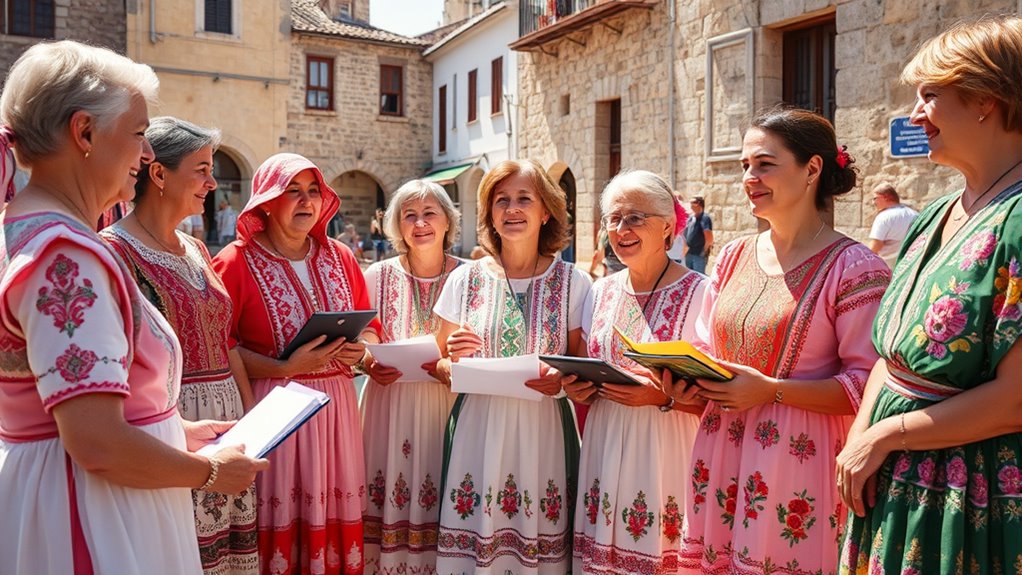
Policy initiatives in Sardinia are actively shaping a more equitable future for women by targeting structural changes across institutions. The Gender Equality Plan (GEP) promotes gender mainstreaming in research, funding, and regional programs through collaboration among government, research bodies, and stakeholders. Continuous communication and alliances guarantee ongoing engagement and progress within the Supera project, addressing systemic imbalances. Labor policies aim to boost female employment, recognizing women’s achievements with awards and expanding welfare support to help women balance work and family. Cultural initiatives highlight women’s contributions to Sardinian heritage, fostering visibility and challenging gender stereotypes. Efforts to increase women’s leadership in politics and public service continue, aligning with national and European goals. Recent legislative reforms have also introduced measures to combat gender-based violence and promote safety for women, and future perspectives focus on sustained policy alignment, promoting gender equality as a core societal value. Additionally, initiatives promoting women’s political participation are essential for achieving comprehensive gender parity at all levels of decision-making.
Frequently Asked Questions
How Do Sardinian Women’s Roles Compare to Other Mediterranean Societies?
You’re asking how Sardinian women’s roles compare to other Mediterranean societies. In Sardinia, women historically shoulder tough jobs, especially in pastoral communities, but lack formal authority, unlike some coastal areas where women had more trade roles. They participate slightly less in the labor market and carry a high unpaid care burden. Despite higher education levels and growing entrepreneurship, gender roles remain traditional and more burdensome compared to other Mediterranean regions.
What Are the Main Barriers to Female Employment in Sardinia?
Imagine a garden where women are seeds full of potential, yet barriers block their growth. In Sardinia, you face structural issues like mismatched skills, limited training, and job insecurity. Social expectations and stereotypes act like weeds, stifling opportunities. Without proper support and policies, you struggle to blossom professionally, stuck in a cycle of underemployment and inequality, despite your high education and talent.
How Does Traditional Gender Division Affect Sardinian Women’s Mental Health?
You’re likely to feel increased stress and mental health challenges because traditional gender divisions place heavy burdens on Sardinian women. They often shoulder demanding workloads, juggle family responsibilities, and face societal expectations that limit their autonomy. This constant pressure can lead to anxiety, depression, and exhaustion. The persistent stereotypes and limited empowerment reinforce these stressors, making it harder for you to achieve personal fulfillment and maintain good mental well-being.
What Impact Do Regional Policies Have on Women’s Social Empowerment?
Regional policies in Sardinia aim to boost women’s social empowerment by providing employment support, fostering gender equality, and creating welfare networks. You benefit from initiatives like income support, empowerment pathways, and recognition for women excelling in innovation. These measures help you gain economic independence, improve access to services, and challenge traditional barriers, ultimately strengthening your role in society and promoting long-term gender equality across the region.
How Are Sardinian Women Influencing Local Cultural and Social Change?
You see how Sardinian women are shaping cultural and social change by actively preserving traditions like language, music, and religious practices. They pass down customs across generations, reinforcing community identity. Additionally, modern women are taking on leadership roles, advocating for cultural renewal and social progress. Their involvement bridges the past with the present, fostering resilience and unity in Sardinian society, and driving positive change while honoring their rich heritage.
Conclusion
Understanding women’s roles in Sardinian society is like steering a rich tapestry woven through history, culture, and change. As you explore their stories, you see how resilience and tradition intertwine to shape their lives. While challenges remain, ongoing policies act as guiding stars, illuminating a future where women can fully thrive. Embrace this journey, knowing that each thread you uncover strengthens the fabric of Sardinian society, making it more vibrant and resilient than ever before.
